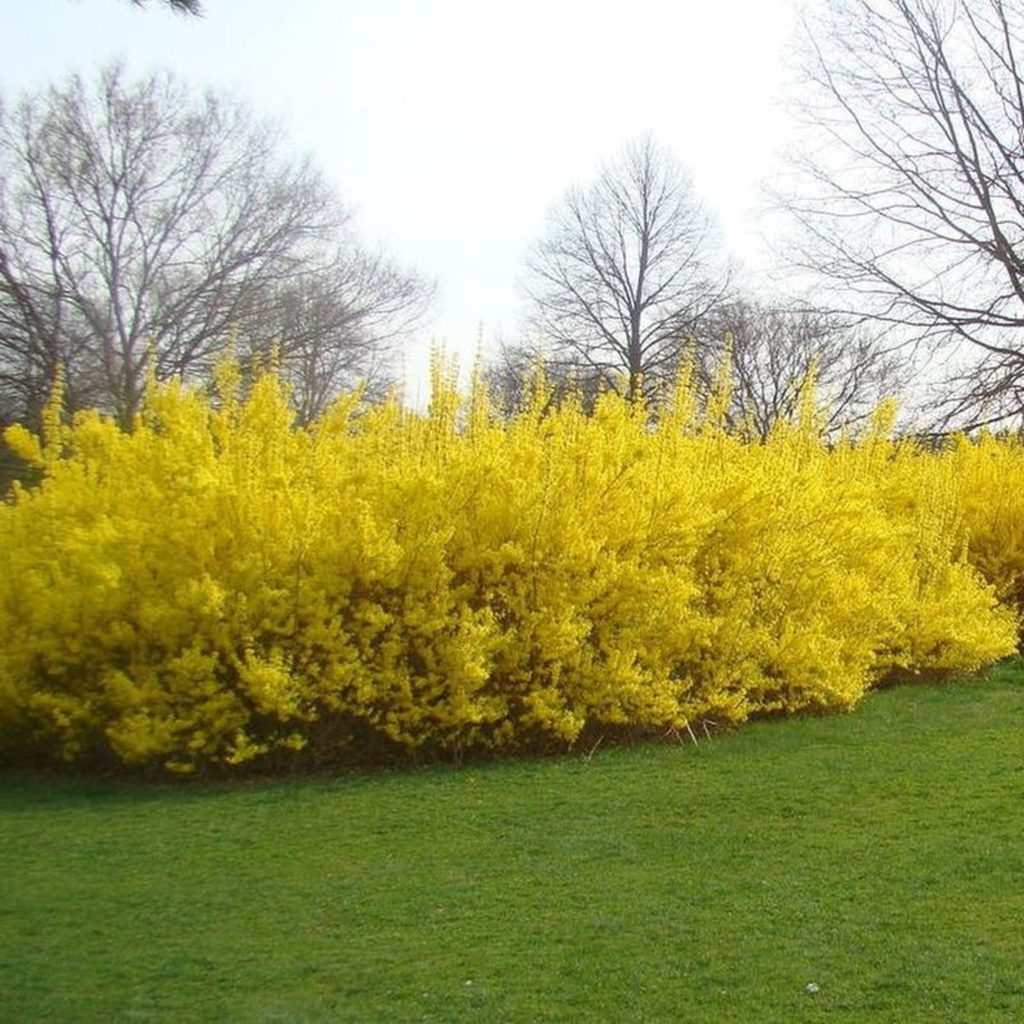Forsythia
Gold Standard, With its boughs laden with brilliant yellow blooms, forsythia earns its
place as a spring garden stalwart.
Subtle is not an epithet anyone ever applied to forsythia, the well-known shrub that turns Colman’s Mustard tin color each April.
For many gardeners, it is a step too far. But no one can deny its cheerfulness, and if you enjoy cutting garden flowers, its branches bring a ray of spring sunshine into your home, often at Easter.
Asian Origin
Forsythia belongs to the olive family, Oleaceae, its species mainly found in east Asia. Botanist Carl Peter Thunberg spotted Forsythia suspensa in a Japanese garden in the late 18th century.
By 1833 F. suspensa had made its way to Holland, and by the middle of the century, Veitch Nurseries were selling it in England.
At around the same time, Scottish plant hunter Robert Fortune discovered F. viridissima in
China.
He sent it back to the Horticultural Society (the society only became ‘Royal’ in 1861), in whose garden it flowered in 1847.
Nursery workers crossed the two species, and it was this breeding gave us Forsythia x intermedia and its hybrids, which make up most of the forsythia on offer today.
The shrub was named after William Forsyth, an Aberdeenshire man who trained at the Chelsea Physic Garden and was superintendent of the royal gardens at Kensington and St James’s Palace 1784 until he died in 1804.
He was one of the Royal Horticultural Society’s founders and great-grandfathers of landscape gardener Joseph Forsyth Johnson, great grandfather to the entertainer Bruce Forsyth.
Forsythia always looks best left to grow naturally, without pruning. So in Trees and Shrubs Hardy in the British Isles, the oracle W.J. Bean suggests sitting them:
“where they can grow freely yet are not so remote from the comings and goings of daily life that the birds can destroy their flower buds undisturbed.” So, other than avian interference, expect few problems.
The shrub featured in the 2011 film Contagion by Steven Soderbergh, prescient of the Covid-19 pandemic.
Jude Law played a conspiracy theorist who claimed a forsythia-based remedy could cure the film’s deadly virus.
Does Steven Soderbergh have a penchant for yellow spring shrubs, perhaps?
How To Grow Forsythia
forsythia when to plant
Forsythia is an easy shrub to grow in sun or light shade, doing best on rich soil since
it’s a hungry plant.
After the flowers have faded, its mid-green leaves look rather plain, so plan to grow
something else nearby to supply interest from early summer onwards.
Forsythia when to Prune
If left unattended, the forsythia shrub may transit to a rather strange-looking shape; one feature is that branches spring out in arbitrary directions.
Many of us prefer this crazy look, and you should not think of annual pruning to be mandatory by all means.
If you like your bush’s shape, you can leave it for a couple of years without pruning.
On the other hand, if you are more into a decent shape, you can go ahead and prune your bush as per your liking to shape it into a more sightly shape.
Forsythia How To Prune
Forsythia bushes pruning is best done after blooming in the spring; hence the next spring’s flowers will blossom on wood formed the previous year.
Therefore, if you prune after the end of July, you may face the risk of losing all of the flowers for the following spring.
This will not ruin the plant. However, it means you will have shabby shrubs for a year.
Start by pruning approximately a quarter to a third of the original branches, cutting them to the ground.
That will boost new growth and a more solid form. After this “renewal” pruning, you may as well selectively cut fresh branches to expand upon the overall shape of your forsythia.
Common Pests and Diseases
Forsythia plants can be susceptible to knobby galls appearing along with the stalks, also fungal twig blights.
The two problems are best resolved by removing affected stalks. Twig blights can be averted by maintaining the plant correctly pruned to increase air circulation, and of course, by using a fungicide.
Untimely frost may kill the flower buds in climate zones borderline with the plant’s hardiness rating.
A variety rated for zone 5, for example, may occasionally lose its flowers in an area 5 garden if an early cold spell hits.
This will seldom kill the plant, and the flowers generally return after a year of no blooms.

























Comments are closed.